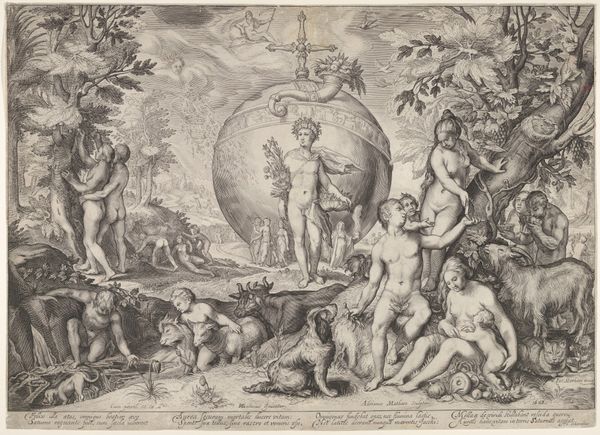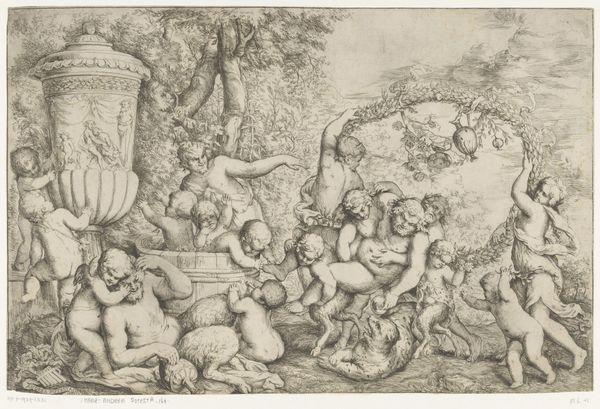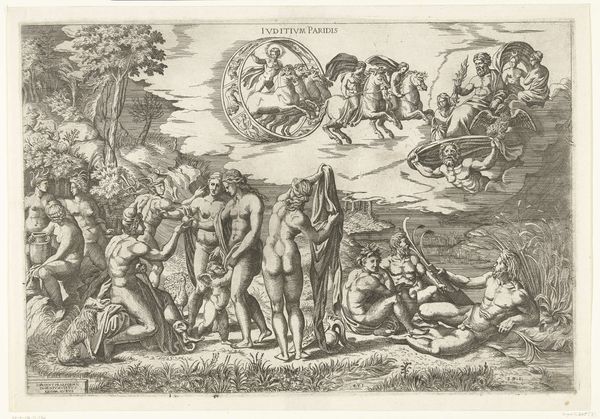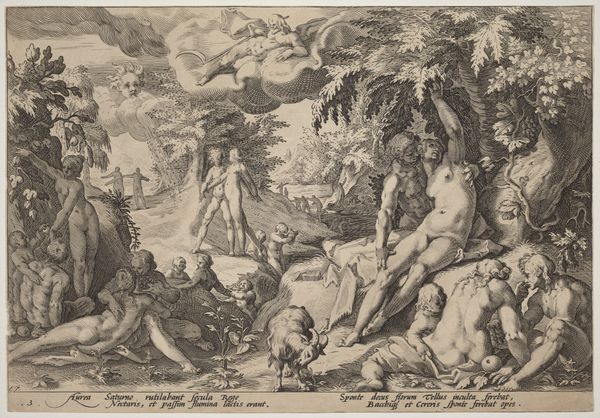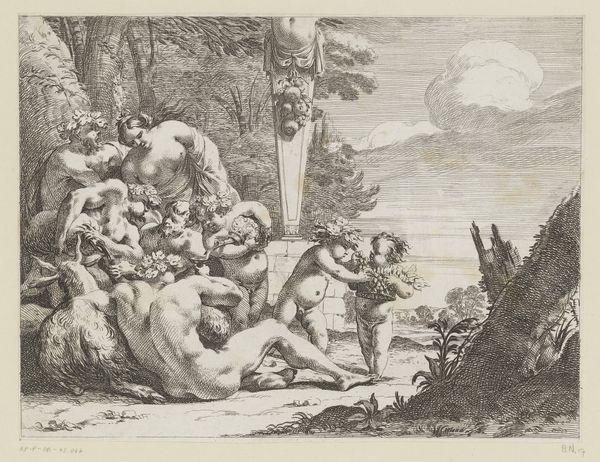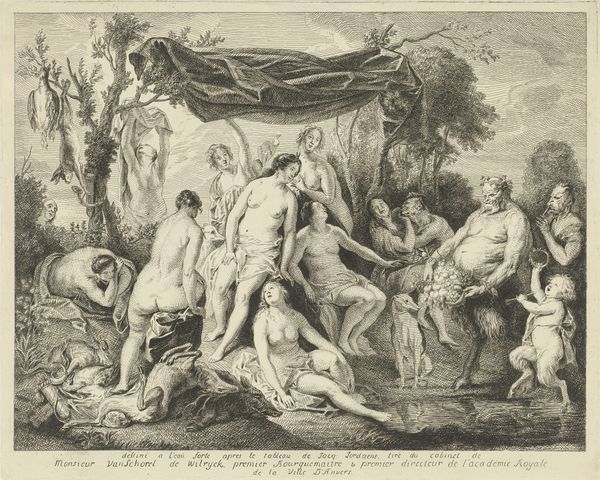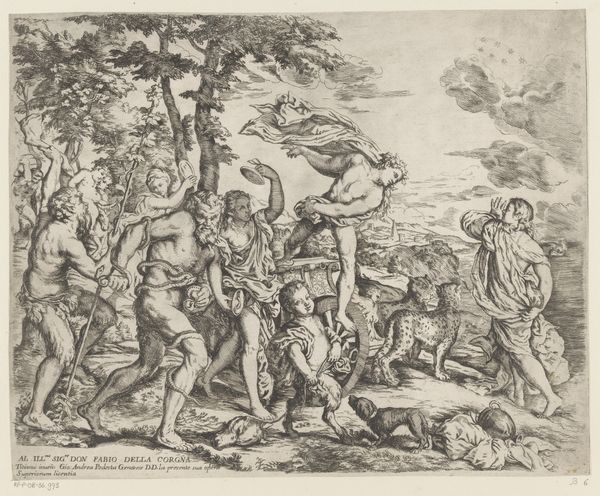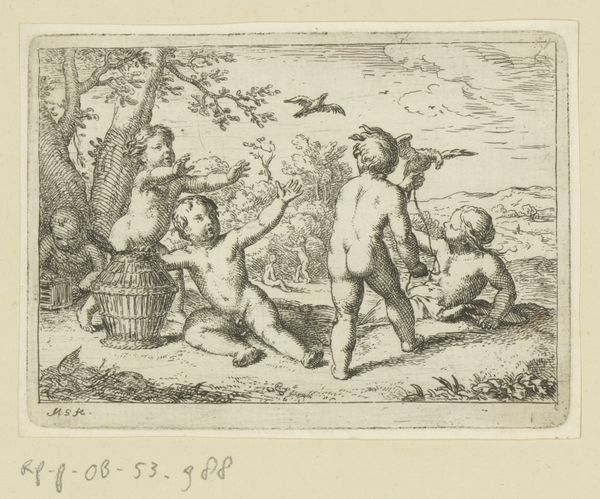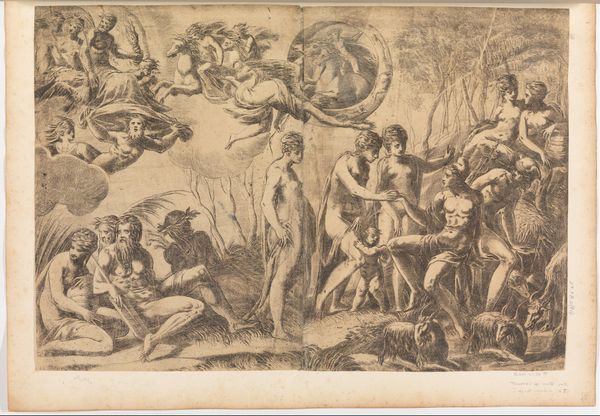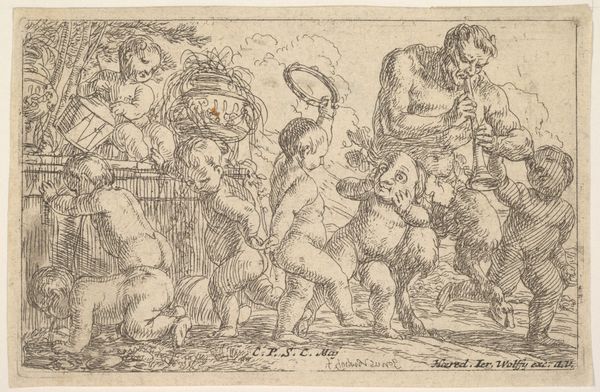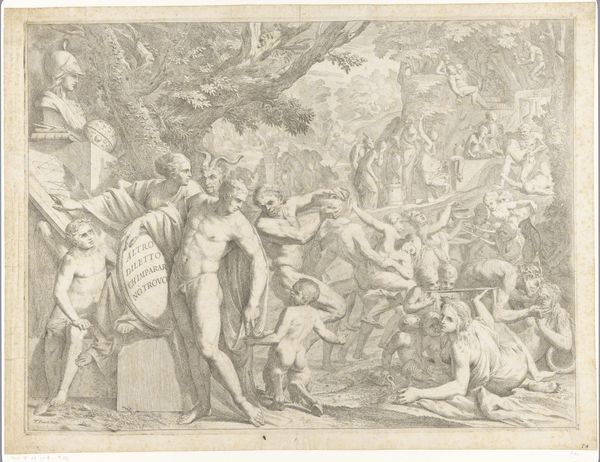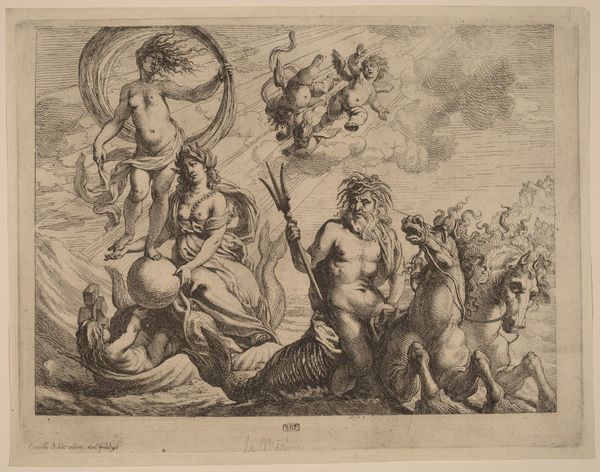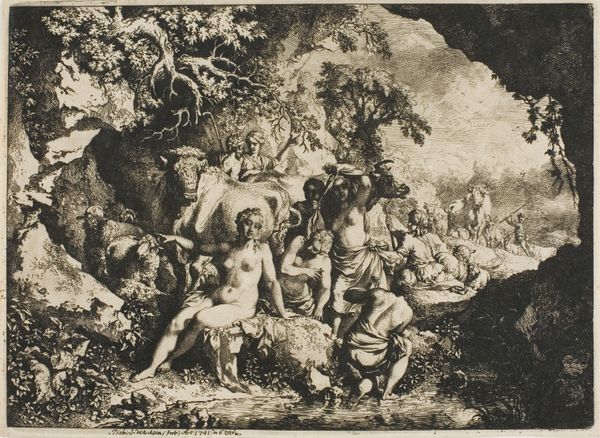
print, etching, engraving
#
allegory
#
baroque
# print
#
etching
#
figuration
#
history-painting
#
engraving
Dimensions: height 262 mm, width 391 mm
Copyright: Rijks Museum: Open Domain
Giovanni Andrea Podestà etched this allegory with putti sometime in the 17th century. Note the various putti, or cherubic figures, engaging in symbolic activities—painting, playing music, and even carrying an hourglass. These symbols invite us to consider the ephemeral nature of time. Observe the recurring motif of embracing figures throughout the history of art, symbolizing unity, love, or conflict resolution. These embracing figures, though seemingly innocent, evoke a deep sense of longing. The symbol of the putto itself is fascinating. Rooted in classical antiquity as representations of Cupid or Eros, they evolved through the Renaissance and Baroque periods to embody divine love and innocence. The hourglass carried by one of the putti is a potent symbol of time's relentless march. Found in vanitas paintings, it is designed to remind us of our mortality and the fleeting nature of earthly pleasures. The cyclical nature of symbols allows us to trace their evolution across centuries. This symbol, which is so deeply entrenched in our collective memory, continues to shape our understanding of time, love, and existence.
Comments
No comments
Be the first to comment and join the conversation on the ultimate creative platform.
